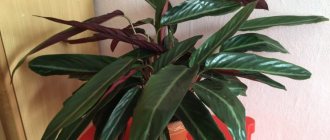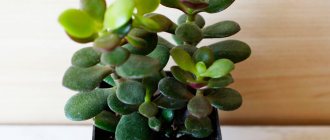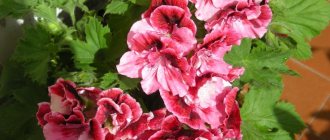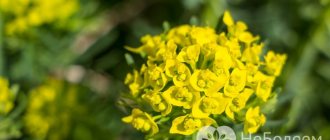Euphorbia indoors is a perennial or annual, very original plant. All the huge number of its species are completely different from each other, some grow with a stem upward, others do not have one at all.
One thing that all types of milkweed have in common is the presence of white (milky) juice, which is released on the cuts. This is where the name actually comes from. Grows mainly in the tropics.
Proper care
This is perhaps the very case when caring for a flower at home does not cause difficulties. Indoor spurge is not at all demanding, but there are standard rules for growing it:
Transplantation should be done only in spring. If you bought it in a pot, be sure to replant it as quickly as possible.
Every flower needs good soil. Euphorbia requires looser soil, for example, if you buy ready-made soil, then choose for cacti.
If you make the soil yourself, then you need to mix: earth, humus and sand, in a ratio of 2 parts earth, 3 humus and 3 sand. Pebbles or expanded clay are suitable for drainage.
Types of milkweed
Among the most common indoor varieties are the following varieties of euphorbia:
- Head of a jellyfish. A very strange-looking plant, but that makes it even more attractive. As such, it does not have a main stem; rather, it resembles a bunch of tentacle-like processes emerging from the central part. It blooms with very small, inconspicuous yellow flowers, but, as is already clear, it is bred not for its flowers, but for its decorative structural features.
- Most beautiful. This variety, on the contrary, is loved for its lush flowering. Its leaves are rich, green, elongated, and its flowers are large, velvety, red, as if made from some kind of fairy-tale material.
- Foxtail. This variety owes its name to its bright red, shaggy and oblong inflorescences, which really look like a fox’s tail. The plant itself resembles a small bush with quite ordinary-looking, although more fleshy, leaves. One of the varieties of milkweed that has quite traceable and normal-looking stems.
- Abyssinian. This variety, on the contrary, cannot boast of any familiar forms. It is an oblong succulent on which leaves as such do not grow. At the same time, it has a rather remarkable and peculiar appearance, and if this variety of milkweed is properly cared for (fed in time and transplanted into pots of appropriate sizes), even in indoor conditions it can grow to gigantic sizes.
- Belozhilkovy. The most common variety on our window sills. It has the appearance of a pentagonal succulent that stretches as it grows, topped with a cap of elongated succulent leaves with whitish veins.
- Resiniferous. It is often called the spurge cactus because it is most similar to a cactus. It has the appearance of a tetrahedral succulent, the edges of which, diverging from the center, become flatter. During flowering periods, the upper parts of these edges are covered with small yellow flowers.
How to water
It is important not to over-water it, otherwise the flower may die. In spring and summer, once a week is enough; if it’s really hot, no more than once a day. During a certain period of “rest” - once a month is enough.
If the plant has not been watered for a long time, do not immediately fill it with large amounts of water. Apply a little at a time to nourish the soil and roots.
As for the most favorable temperature, milkweed is definitely warm for a houseplant. In spring and summer, take it outside more often.
Dry air does not affect the condition of the flower in any way.
Pruning and propagating milkweed
Pruning is done in three cases:
- For the correct and aesthetic formation of the “crown” (how appropriate is the application of this term to the same triangular milkweed);
- To rid the plant of disease-affected areas;
- If the plant has become too tall.
The plant is very picky, and if its roof is cut off, it will not suffer much. Cut off the segment where necessary. At first, a lot of milky juice will be released.
Blot it with a cotton swab, then leave it to dry. At first, the area will be covered with a film, and later it will completely dry out and heal. After some time, lateral shoots will appear on the sides of the milkweed (from the main succulent or from its base, depending on the variety).
Euphorbia can be propagated using cuttings or seeds. Preference for one method or another is given based on the type of plant. The process also depends on the characteristics of the variety.
What can cause harm
Most often, diseases occur due to improper care.
- The flower has begun to rot - most likely it is standing in a draft;
- The appearance of mold and falling leaves is a sign of lack of moisture.
Pests also often attack it: root or mealyworms, aphids, spider mites. All of them can cause yellowing leaves. To solve this problem, it is enough to purchase a special pest control product from a gardening store.
Diseases and pests of milkweed
Euphorbia has a strong immunity to most major plant diseases. Although some known pests can also have a negative effect on the plant. The most dangerous enemy of milkweed is the mealybug. When a white coating appears, you should wipe the entire affected part of the plant (if it is not a succulent, but the leaves, too, both above and below) with water and alcohol or a solution of laundry soap.
Thrips, aphids, some types of fungi and spider mites can also cause problems in some varieties of milkweed:
- Spraying with tincture of garlic with alcohol, treating with mustard and onions helps against aphids.
- A solution of laundry soap and a solution of alcohol will help get rid of the tick.
- Store-bought fungicides can help control fungi.
If you water, feed, replant euphorbia correctly and on time and keep it on a clean windowsill, where regular cleaning is constantly carried out, your plant will not be afraid of any diseases and it will grow happily on your window for a long time, delighting the eyes of outside observers.
Why is the plant dangerous?
Euphorbia is a house flower. However, this indoor plant produces a poisonous milky sap that can harm households and animals. Allergy sufferers are especially affected.
- Infection with poisonous milkweed juice can cause irritation and burns of the skin.
- If the sap gets into your eyes, you can be temporarily blinded and even crippled for life.
- An allergic reaction is possible: lacrimation, skin rashes.
- If the juice gets inside, vomiting, dizziness, breathing problems, swelling of the tongue, and convulsions may occur.
What to do in this case? Be sure to call a doctor!
- Before the doctor arrives, you need to take antihistamines.
- If juice gets on the skin, rinse and apply a piece of ice to the burn.
- In case of contact with eyes, apply albucid drops to prevent infection. If your eyes are red, apply any antiallergic drops.
- In case of poisoning from the juice of the plant, you need to rinse your stomach, drink activated charcoal, take Enterosgel and other intestinal cleansing agents, and use a laxative.
Species diversity
The genus Euphorbia includes more than 2 thousand plants. Some of them grow outdoors, but there are also indoor species. The most commonly found as a house plant are:
- Euphorbia white-veined. The most common perennial species, resembling a palm tree. It has large oval leaves with pronounced white veins. The flowers of Milkweed are small and inconspicuous; after they wither, seeds appear in their place.
Euphorbia white-veined - Euphorbia Tirukalli is a perennial indoor flower. The peculiarity of this succulent is the complete absence of leaves. The entire flower consists of stick-stems sticking out in different directions. This species blooms rarely and only with proper care.
Euphorbia Tirukalli - Euphorbia triangular. It grows as a shrub with thick triangular shoots. On the dark green branches, light streaks and red-brown thorns are clearly visible. The leaves of Euphorbia triangular are very small and resemble a spatula.
Euphorbia triangular - Euphorbia Mile. A small shrub with a branched ribbed stem. Its top is framed by green ovoid leaves and small grouped flowers of scarlet, purple, lemon or orange.
Euphorbia Mile - Euphorbia obese. A perennial flower resembling a round cactus without thorns. It has almost invisible ribs. The diameter of Euphorbia Obese can reach 8 cm. Sometimes small flowers appear at the top of the plant.
Euphorbia obese
This is only a small part of all types of indoor euphorbia. All of them are not similar to each other and have a unique structure.
Why is a transplant needed?
A milkweed transplant is needed in one of these cases.:
- The plant has grown. The roots of the milkweed are already cramped in the old pot, so the flower needs to be replanted.
- The roots of the milkweed have rotted and are affected by a fungal disease. In this case, fresh, uncontaminated soil is like an ambulance.
- The flower arrived from the store in a pot suitable for transportation, but not for living.
- The container from the store is still suitable, but the soil in it is a special substrate with the addition of growth stimulants.











